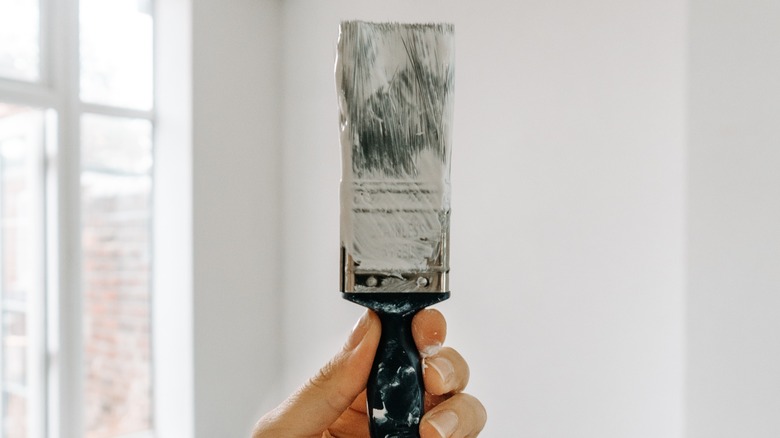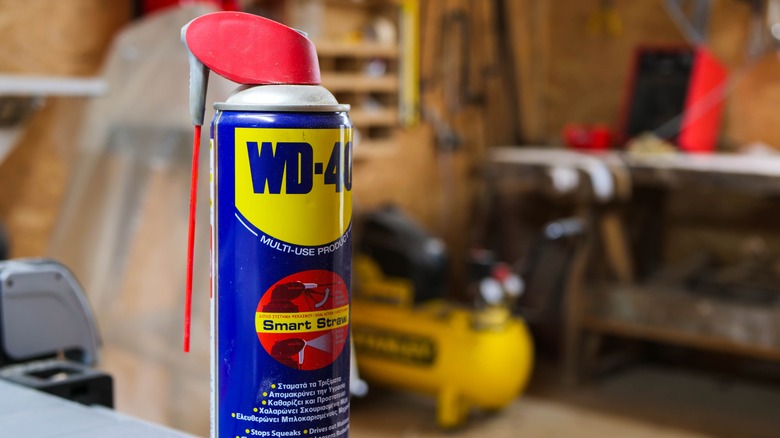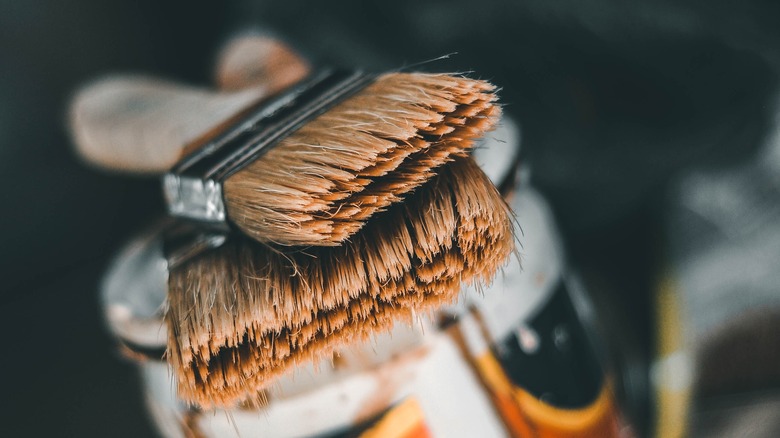A WD-40 Trick Will Make Reusing Paint Brushes Easier Than Ever
One of the downsides to painting a room is that the prep takes almost as long as the job itself. From getting your brushes ready, laying down the tarps, and taping down baseboards, getting the room set up takes a decent amount of time. But what if you could set yourself up for success by prepping some of these things ahead of time? When it comes to paint brushes, a can of WD-40 helps ensure they are ready to go the next time you need them.
Even if you properly wash and store them, the bristles tend to get crispy. That's because you are leaving behind a small amount of paint, which becomes stiff and dehydrated on the bristles once it dries. But if the paint brushes are pre-treated with WD-40 before they are stored away, they will remain soft and pliable, making them ready to use when needed. Here's how to make painting even easier with this WD-40 hack.
How to apply WD-40 onto your paint brushes
The best way to ensure your paintbrushes stay soft and hydrated is by spraying them with WD-40 before you put them away. To do so, first thoroughly wash your brushes with warm, soapy water, taking care to remove all of the visible paint. Then take your can of WD-40 Multi-Use and gently spray it all over the bristles. You don't want to over-saturate so the brush is dripping, but you want a healthy enough spritz that it becomes lubricated.
You can also add some WD-40 to the brush's ring nut, which is the metal band that connects the bristles to the brush handle. This part tends to become rusty if dried improperly since lingering water can change the metal's composition. If you use a rusty brush without knowing, you risk dirtying the walls with the residue. To avoid that, coat the ring nut, ensuring the water properly dispels.
Why this works
While some people might reach for WD-40 to lubricate a squeaky door or fix a rattling bike chain, its main purpose isn't to oil things. Instead, it's to repel water to avoid rust and corrosion. After all, its name stands for "Water Displacement, 40th formula." While its exact formulation is a secret, the product is water-repellent, and when it coats a surface, it becomes the same.
So when you're using the product on your paint brushes after washing them, you're essentially pushing out any residual water or remaining paint from the bristles, allowing it to dry properly. This helps them stay supple rather than brittle, making them easy to use for your next project.
The same rules apply to the brush's ring nut. Coating it with WD-40 ensures any residual water gets pushed out, protecting the ring from corrosion and helping the paintbrush feel newer for longer. Once done, store your paintbrushes in brush protectors, and you'll have a like-new tool for your next painting project.


